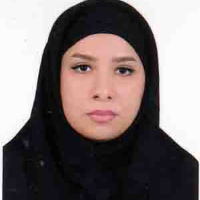Designing a Neuropsychological Model of Creative Mind Development in Children with Dyscalculia
Learning disorder is a problem that affects studentschr('39') neuropsychological functions. This disorder is basically an inability to perform the expected arithmetic skills in terms of the childchr('39')s Intelligence Quotient (IQ) and educational level, i.e., assessed by individualized and standardized tests. The present study aimed to design a neuropsychological model of developing creative mind in children with learning disorders.
This study was a retrospective descriptive–correlational study, based on applied purpose and nature. The study population consisted of 1800 first– to sixth–grade students in Bandar Anzali City, Iran in the academic year of 2018–2019. According to the Guilan Learning Disorders Association, the number of children with dysfunctional arthritis referred to Bandar Anzali Learning Disorders Center was equal to 128. Due to the lack of identification of some other students with learning disabilities or the lack of referral to improve mathematical problems, the researcher referred to the public and private elementary schools. Accordingly, the necessary permission was obtained from the city education department. Using random sampling method, 10 elementary schools were selected from all schools in Bandar Anzali City. After referring to schools and performing the Wechsler Intelligence Scale (2004), KM mathematical test (1988), and interview with class teachers, the total number of children with learning disabilities was estimated to be 223. Of these, 204 participants’ IQ scores (memory scores, reasoning, & understanding subscales) on the Wechsler Intelligence Scale ranged from 89 to 103. Besides, the selection of students was conducted with accordance to their IQs, the variable control of intelligence. Those with lower or higher than average IQs were excluded from the study. Subsequently, the Coolidge Personality and Neuropsychological Inventory (2002), Brain Side Effectiveness Test (1965), Torrance Creativity test (1993), Perceptual Motor Questionnaire of Cratty (1967), Corsi Blocks Task (1972), and Memory Rating Scale of Alloway (2008) were performed on the study subjects. Moreover, the conceptual model of research was developed based on Ned Hermannchr('39')s brain dominance model. Descriptive statistics were used to analyze the obtained data presented by mean and standard deviation. To draw tables, we used SPSS. Furthermore, to test the proposed model, structural equation modeling was used by LISREL software. Additionally, Cronbachchr('39')s alpha coefficient was used to estimate the significance level of the employed tests. The study inclusion criteria included the lack of experience with the Wechsler Intelligence Scale, the lack of participation in executive function courses, or brain training programs. In addition to observing ethical issues, the researcher was closely supervised in completing the questionnaire and provided the explanations of the research goals to the study participants and their parents; the study samples and their parents were justified in this study as a research study and those who did not wish to participate were excluded from the study. In addition to collecting information, students and their parents were assured that their provided information would be used anonymously. This research was conducted through field and library method. In the field approach, a questionnaire tool is applied and distributed among the study participants to obtain the necessary data for analysis. In the library method, the style of retrieval of related books as well as authoritative scientific articles and sites are considered. The theoretical and empirical backgrounds related to this research were also collected.
The structural equation modeling analysis revealed that the activation of executive functions in two segregated individuals leads to brain creativity; consequently, it improves perceptual–motor, visual–spatial, and memory function. The relevant results suggested a relationship between the variables of executive functions with creativity (Beta=0.36, p=0.003). There was also a relationship between creativity and perceptual function (Beta=0.30, p=0.003), motion (Beta = 0.21, p=0.001), visual–spatial (Beta=0.36, p=0.003), and memory (Beta=0.24, p=0.003). By fitting the final model, the fit indices were respectively for Chi–squared (p=0.05, CIMIN=4.68), comparative fit index (CFI=0.91), and parsimony comparative fit index (PNFI=–0.661), and the root mean square error of estimation (RMSEA=0.06) were calculated. These values indicated that the resulting model had a good fit to the data.
Based on the present study findings, the model designed to improve neuropsychological problems in preschool children was useful. Applying this model could help teachers identify and treat studentschr('39') neuropsychological issues.
- حق عضویت دریافتی صرف حمایت از نشریات عضو و نگهداری، تکمیل و توسعه مگیران میشود.
- پرداخت حق اشتراک و دانلود مقالات اجازه بازنشر آن در سایر رسانههای چاپی و دیجیتال را به کاربر نمیدهد.



